Fairchild AU-23 Peacemaker
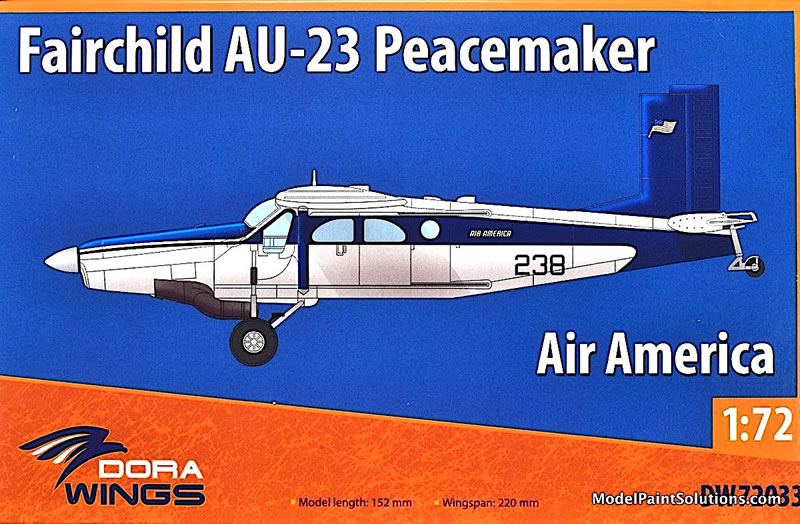
Dora Wings, 1/72 scale
S
u m m a r y : |
Description and Item No.: |
Dora Wings Kit No. 72033 - Fairchild AU-23 Peacemaker |
Contents and Media: |
103 grey plastic, 9 clear plastic, and 3 resin parts. |
Price: |
24.00 Euro Plus Shipping available online from Dora Wings' web store
GBP £21.95 UK Price (GBP £18.29 Export Price) plus shipping available online from Hannants |
Scale: |
1/72 |
Review Type: |
First Look |
Advantages: |
Should build into a nice-looking model of a little-known airplane. |
Disadvantages: |
Some details are a bit rough. |
Recommendation: |
This kit is going to require a little extra work in the form of parts preparation and refreshing surface details. Much use is made of photo-etch parts so a little experience dealing with PE would be a good idea. That said, the patient builder will be rewarded with a nice-looking model of a seldom-seen but very cool aircraft.
Keep ‘em coming, Dora Wings! |
Reviewed by John Miller

I’ve always like the looks of the Pilates PC-6 and it’s derivative the Fairchild AU-23 Peacemaker. I reviewed the Dora Wings 1/72 PC-6 when it was first released and liked what I saw. Ditto that for this follow-up release of the Peacemaker.
This won’t be a weekend project but with a little patience and extra elbow grease, the kit will build into a nice-looking model of a little-known airplane.
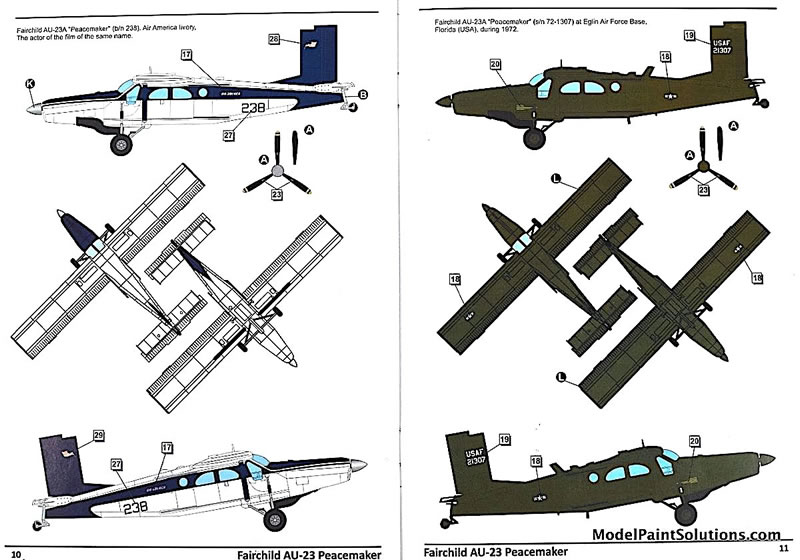
Thanks, Dora Wings!
Here’s a link to my Dora PC-6 review
Background
The Fairchild AU-23 Peacemaker is an American armed gunship, counter-insurgency, and utility transport aircraft developed from the Pilatus PC-6 Porter for the United States Air Force. A total of 35 were built under license in the United States by Fairchild Industries, for use during the Vietnam War in the early 1970s. All aircraft were later sold to the Royal Thai Air Force.
Design and Development
In May 1971 the Aeronautical Systems Division at Wright-Patterson Air Force Base, Ohio, began work on a project to evaluate the potential use of armed light utility short takeoff and landing aircraft in Southeast Asia. The program, named Credible Chase, was designed to add mobility and firepower to the South Vietnamese Republic of Vietnam Air Force (RVNAF) in a relatively short time. Two commercial aircraft were selected for testing: the Fairchild Porter and the Hello Stallion. Initial performance testing was conducted with leased aircraft at Elgin Air Force Base, Florida, and was successful enough to warrant a combat evaluation. The Porter, designated AU-23A, was fitted with a side-firing 20mm M197 electric cannon, four wing pylons and a center fuselage station for external ordnance. The 20mm cannon was essentially a three-barrel version of the M61 Vulcan 6-barrel 20mm cannon. The aircraft could carry a variety of ordnance including forward-firing gun pods, 500 and 250 pounds (230 and 110 kg) bombs, napalm units, cluster bomb units, flares, rockets, smoke grenades and leaflet dispensers.
On June 30, 1972, the US Air Force ferried the remaining AU-23As to Davis-Monthan Air Force Base, Arizona, for storage. All AU-23A’s were later supplied to Thailand under the Military Assistance Program for use in border surveillance and counter-infiltration roles.
Text edited from Wikipedia.
The kit comes in a lidded box with a nice depiction of the blue and white Peacemaker (238) used in the film “Air America.” For fans of the movie, this scheme is covered by the decals. Inside the box are ~103 grey, 9 clear, and 3 resin parts. In addition, windscreen/window masks, a photo-etch fret with ~48 parts, and one decal sheet with markings for 4 schemes rounds out the package. The initial impression is one of a quality limited production kit; my favorite kind :)
Being a limited production kit, some details are a bit rough. There’s flash on some of the smaller parts and the sprue gates are a bit large. The recessed surface details are nicely done for the most part although some lines are uneven depth-wise and will have to be re-scribed. All in all, there’s nothing that can’t be dealt with by a little patience and a few minutes with a scriber and some fine files.
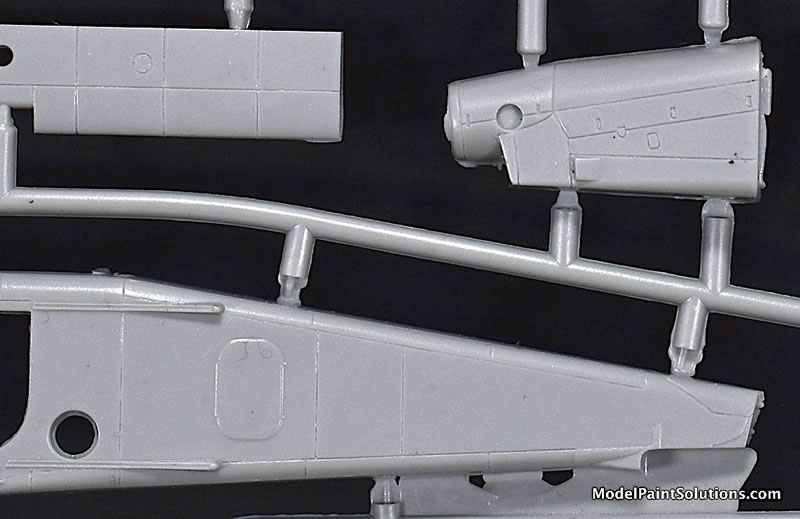
The kit’s engineering is conventional so assembly begins with the cockpit/cabin, which is comprised of 6 passenger seats along with 2 crew; pilot and co-pilot. Cockpit details include dual sticks, rudder pedals, and main instrument panel. Panel details are provided by a decal.
The wings are comprised of a full-span upper wing with left and right lower halves and wing tips. Ailerons and flaps for each wing are combined into a single part. The horizontal stabilizer, from upper and lower halves, is joined to a single-piece elevator completing the assembly. Similarly, the vertical stabilizer, from left/right halves is joined to a single-piece rudder. Both the elevator and rudder are poseable.
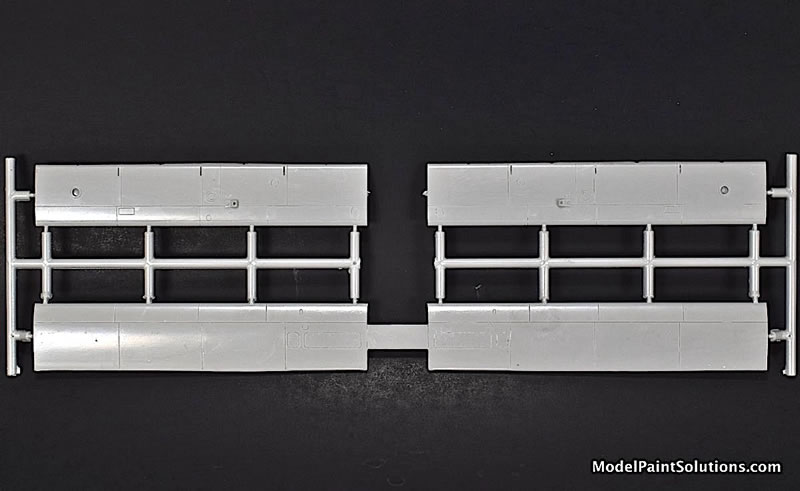
The nose/engine section, from halves, is assembled next and utilizes a resin nose cowl with a nicely rendered “smiling” chin intake and exhaust.
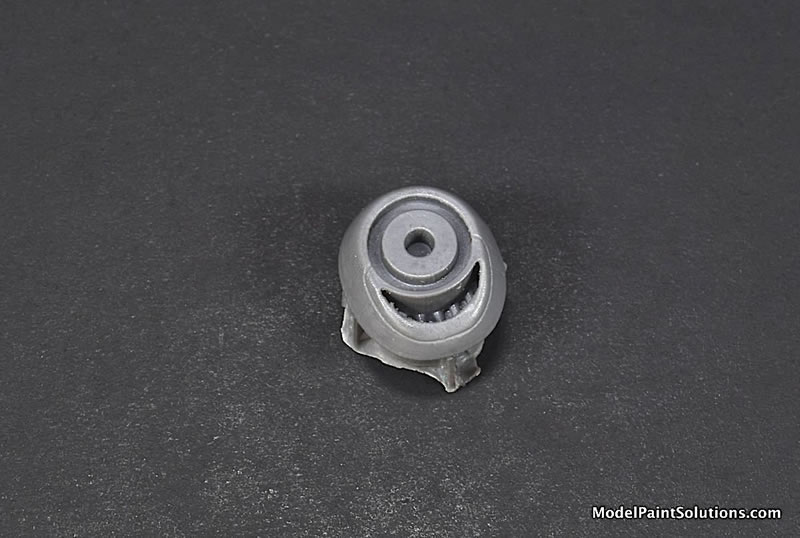

Next up are the main gear with tires/wheels assembled from halves. The hubs are augmented with photo-etched details. In fact, photo-etch is utilized on a lot of the sub-assemblies within the kit but nowhere is this more evident than in the numerous airframe surface details such as access covers, control surface hinges, and antennae that are provided as photo-etch parts.
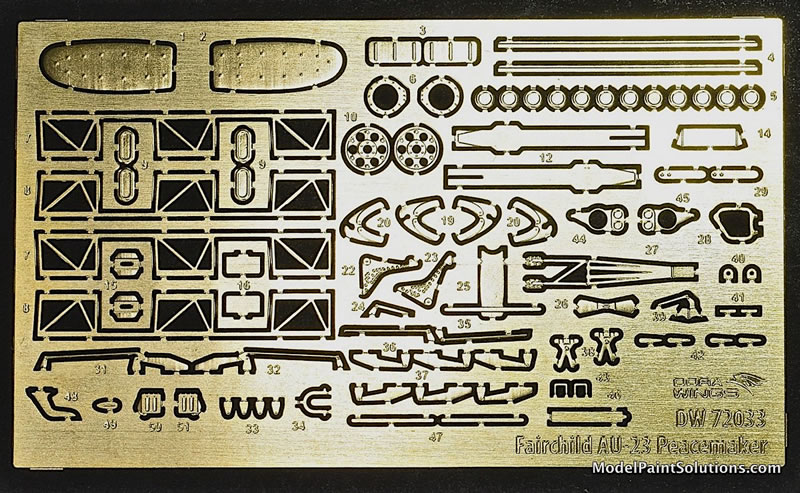
Underwing stores include a pair of rocket launchers and fuel tanks; both from halves. An additional pair of pods are provided on the sprue but not used.
Clear Parts
The windscreen and window parts are nicely molded with good clarity and will require very little clean up for use.
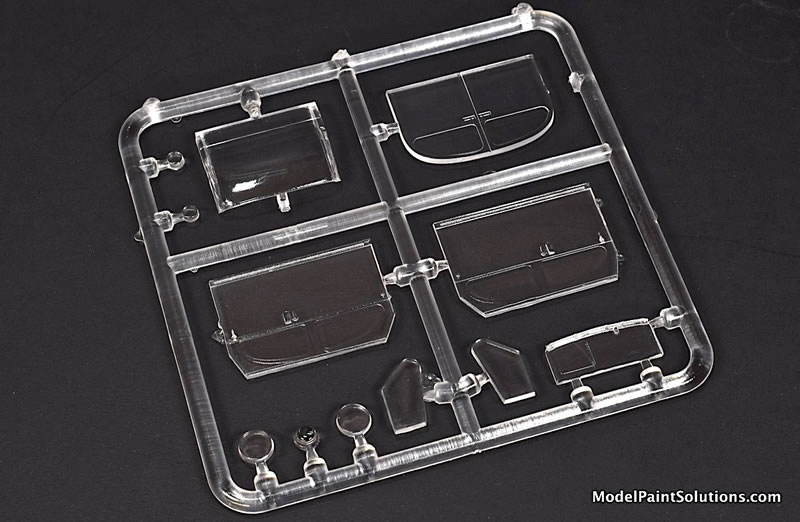
Color and Markings
The decals, by Decograph, are crisply printed with good registration and color density. Markings are provided for four airframes.
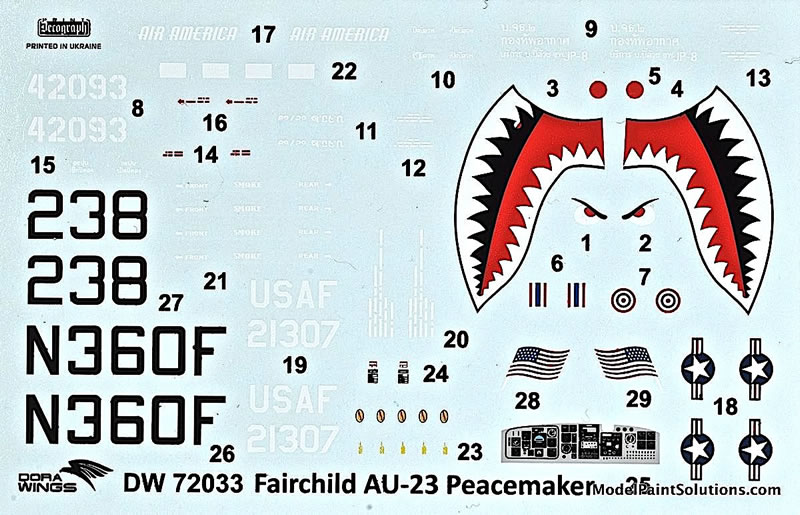
Die-cut vinyl masks are also provided for painting the the blue and white scheme from the film "Air America" (scheme #2 below).
The schemes covered are as follows:
-
Royal Thai Air Force, Bangkok, January 2018
-
Air America, Bangkok Airport, late 1960’s.
-
Scheme from the film “Air America.”
-
Eglin Air Force Base, Florida USA, 1972
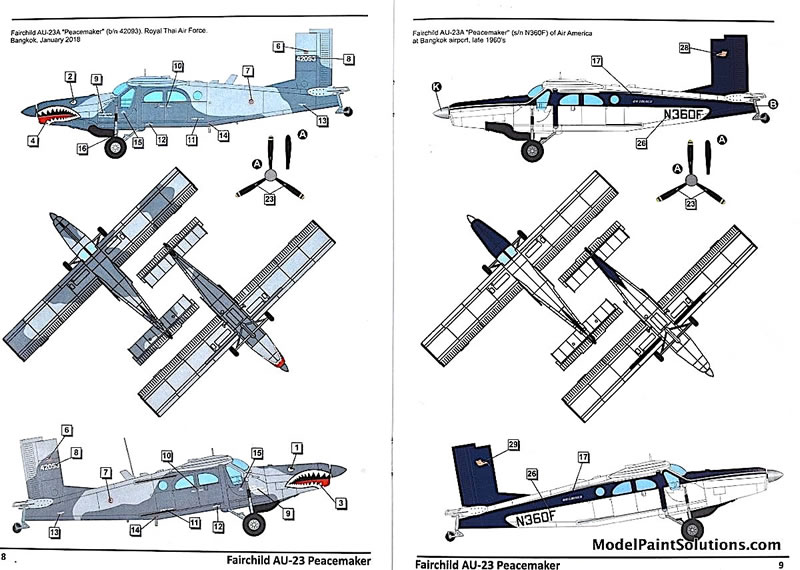
This kit is going to require a little extra work in the form of parts preparation and refreshing surface details. Much use is made of photo-etch parts so a little experience dealing with PE would be a good idea. That said, the patient builder will be rewarded with a nice-looking model of a seldom-seen but very cool aircraft.
Keep ‘em coming, Dora Wings!
Keep your airbrush wet
—John
For more on this review visit ModelPaintSolutions.com
Text and images copyright ©2024 by John Miller/Model Paint Solutions.
Review Text and Images Copyright © 2024 by John Miller
Page Created 26 October, 2024
Last updated
26 October, 2024
Back to HyperScale Main Page
Back to Reviews Page

|
Home
| What's New |
Features |
Gallery |
Reviews |
Reference |
Forum |
Search